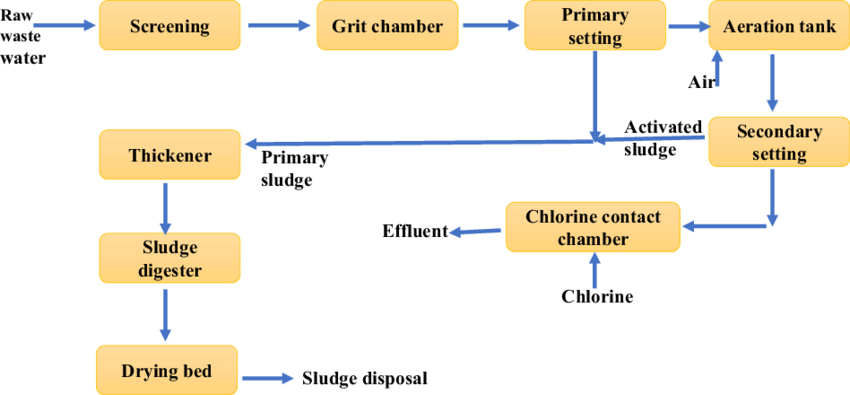The 6-Minute Rule for Reclaim Waste
The 6-Minute Rule for Reclaim Waste
Blog Article
Some Ideas on Reclaim Waste You Need To Know
Table of Contents5 Simple Techniques For Reclaim WasteEverything about Reclaim WasteA Biased View of Reclaim WasteNot known Facts About Reclaim WasteGetting The Reclaim Waste To WorkA Biased View of Reclaim Waste
With proper liquid waste monitoring, business can lower energy-intensive treatment procedures and disposal costs. By following a system for handling liquid waste, business can avoid pricey penalties and penalties and stay clear of negative promotion.Remain in advance of laws and keep a risk-free workplace with a digitized conformity device. Classifying fluid waste is critical for reliable storage space, therapy, and disposal. Environmental, Health And Wellness, and Safety And Security (EHS) groups, waste administration officers, and conformity managers can handle these wastes safely and efficiently when they understand the fundamentals: Produced from homes, this kind of liquid waste comes from toilets, sinks, showers, and washing devices.
(https://www.sooperarticles.com/authors/792932/leon-aubes.html)Collect representative examples from numerous factors within the waste stream to make certain accuracy. Conduct periodic screening to track any changes in the make-up. Maintain detailed records of characterization for future reference and conformity purposes. Fluid waste, especially dangerous ones, poses significant dangers during this step. Proper procedures minimize spills, leakages, and other accidents that might harm the workers and the general public.
The 2-Minute Rule for Reclaim Waste
Shop waste in protected and leak-proof containers to stop spills throughout collection. Tag the containers suitably, including the type of waste, potential dangers, and managing directions.
Sanitation (e.g., chlorination, ultraviolet light, ozonation) and nutrient elimination (e.g., denitrification and phosphorus eradication) are recommended under rigid policies. Various companies breached several fluid waste disposal laws in recent years.
After picking the most effective sort of therapy technique for liquid waste, companies ought to discover means to take care of this correctly. Below are some effective methods of liquid waste monitoring: receive most treated fluid waste that fulfills discharge requirements. refers to using cured wastewater in farming lands for irrigation as long as the effluent meets hygienic degrees per policies.
Not known Incorrect Statements About Reclaim Waste
are utilized by industries that produce large quantities of low-toxicity liquid waste. Shallow containers contain fluid waste that is permitted to vaporize with natural processes. The deposit left can be taken care of in landfills. entails melting fluid waste at high temperature levels and converting it into gas and ash - industrial wastewater treatment. This type of disposal goes through rigorous ecological laws due to possibly hazardous emissions.
The findings ought to be recorded, assessed, and saved not just for submission to governing authorities however likewise for making renovations in the future. Share details with appropriate stakeholders (e.g., staff members, regulatory federal government firms, and neighboring communities) to keep transparency and liability.
6 Simple Techniques For Reclaim Waste
No matter of the company size or market, there are various difficulties connected with this job. Understanding these can assist them effectively manage their operations and reduce their environmental effect. makes it difficult to deal with and take why not look here care of fluid waste safely. Firms that can not purchase facilities ought to consider collaborating with the general public sector for much better solutions.
Fluid waste refers to any kind of product in a fluid state that is excess, undesirable, or disposed of. One considerable difficulty for firms is the absence of suitable storage space facilities for fluid waste. Partnering with liquid waste services will considerably minimize this difficulty Standard avoid containers and other containers that are typically made use of for solid waste are typically not enough for the unique requirements of taking care of fluid products.
Not known Factual Statements About Reclaim Waste
This blog site looks into the attributes of liquid waste, discussing just how spills and contamination incidents can be taken care of effectively. It also discovers the steps firms can require to stop future leaks and what to do when spills inevitably occur. Liquid waste includes any undesirable or surplus material that exists in a fluid form and is established for disposal.
This kind of waste develops when an item is no much longer required, a lot like any other form of garbage. It is crucial to engage experienced fluid waste management professionals when transporting or disposing of liquid waste.

The Buzz on Reclaim Waste
"product must pass with a 0.45-micron filter at a pressure differential of 75 psi" in order to be defined as a fluid. Both have their distinctions.
Oil spills can bring about dirt contamination and various other ecological calamities. Both services and people can significantly take advantage of recognizing proper garbage disposal procedures through nine best methods in waste management. These methods are aligned with the established waste pecking order. Waste avoidance is one of the most effective technique for handling resources and reducing ecological impact.

Report this page